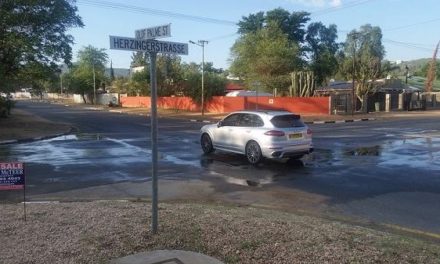
The term Trans-Kalahari has assumed a new, more significant meaning
A new chapter in Namibia Botswana relations started earlier this month with the signing of a memorandum of understanding between the two governments to start planning for a railway line to connect the two neighbouring countries.
According to the Botswana Chamber of Mines, they have lofty ideals to be counted amongst the top five coal producers in the world. Reaching this goal depends on finding new export linkages to connect eastern and western Botswana, and to make them less dependent on the congested export gateway that runs through South Africa’s port of Richards Bay. Enter Namibia as the ideal partner.
We have equally ambitious dreams for developing the so-called Trans-Kalahari Corridor to its full potential. Planning and strategies so far focused on the road network but for a bulk commodity like coal, rail has proven to be the most efficient means of transport. Hence the getting together of the two governments to decide on the first incremental steps that will eventually lead to one of the most impressive cross-border infrastructure projects in the entire southern Africa.
When one considers the scope of the intended Trans-Kalahari Corridor running on rail, it truly presents itself as a mind-boggling project. This new line will run the better part of a thousand kilometres and I suspect it is only the first linkage in a much wider network that will later connect various points in Botswana to what they need most – ocean frontage. It will also help to open up western Botswana which is still rural in the most extreme sense of the word.
It was more than ten years ago that I wrote for the first time about the striking similarities between Botswana and Namibia and the need for convergence in their development agenda and ours. Similar to us, development in Botswana grew along a few trunk lines, with the inevitably consequence that large areas of the country effectively remained off the development grid simply because these areas are so isolated and far from all existing infrastructure. Complicating the development model is the absence of a large population with significant population numbers in only a few centres. Both Botswana and Namibia are essentially vast, open, under-populated countries with an acute lack of infrastructure and water.
A railway link running all the way from Walvis Bay to the other side of Botswana creates many new opportunities. The world’s capital is always looking for new investment opportunities especially in countries where the governments are deemed reliable investment partners.
Looking at development in our own country, one of the main drawbacks of employing our own capital to develop our own infrastructure, is a lack of viable projects. But as synergies developed between us and Botswana, I reckon more such projects will materialise.
But, as all development planners know, infrastructure must be developed as a response to need and demand, but also as a strategy to unlock more future potential. Enter Botswana’s great ambitions to tap their massive coal fields and up their status among the carbon energy producers. The rich Botswana coal fields provide us with the ideal anchor tenant, so to speak. The Botswana Government’s willingness to share the costs of this massive project, provides the additional incentive to get down to business and start making the Trans-Kalahari Railway a reality.
In the domestic market it creates just as many opportunities as in the world of international financing. With a project of this magnitude as backstop, and with proven and reliable investment partners (the two governments), imagine what additional depth can be added to the local capital market.
Even closer and more personal, are the new horizons this line draws for TransNamib. After suffering for many years as a result of a lack of investment, and the urgent need to upgrade extensive sections of the domestic rail grid, suddenly there is a new opportunity to be a partner in a very significant project.
This railway line, in my mind, should go a long way to re-establish the basic importance of rail in any development model of countries endowed with rich natural resources, but penalised by the over-reliance on the more expensive road transport network.
I think our planners must also in due time start working on a project to connect the south-west of Botswana with our southern regions with another railway line crossing the southern Kalahari and linking up with the existing line at Mariental. Then, we can start planning how to turn the Port of Lüderitz into another major export hub.
It only takes a little bit of guts, lots of money, and the political will between two neighbours, to move mountains.










































